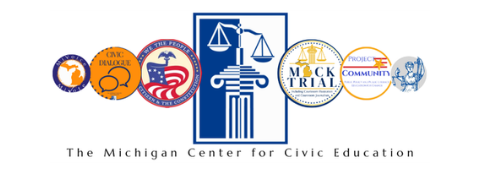Students learn the Importance and Reason for Rules and Laws
Civics Lessons
Mindwalk: The Law is Everywhere
Teaching How Citizens Influence Public Policy
Target Grades: 4-6
In this lesson, students use a school policy to define policy, understand that policies change, and recognize what and who influences policy making and changes.
Constitution Day Lesson-6th Amendment
The goal of this activity is to introduce 6th grade students to the 6th Amendment of the US Constitution (guarantee of an impartial jury for criminal defendants). The materials illustrate how the American juror selection process differs from the jury selection process used in ancient times during the Roman Republic.
What is the Judicial Branch?
This lesson exposes students to the judicial branch and the power of judicial review. They read about an actual Supreme Court case, Torcaso v. Watkins, to see how the judicial branch used its power of judicial review to strike down an unconstitutional state law.
Voting in Congress
Students learn what factors members of Congress consider when deciding whether to vote for a bill. These include the powers given to Congress by the Constitution, members’ personal opinions, political party support, and what voters think. During the first day of the lesson, students find out about each of these factors. During the second day, students get to try their hand at weighing the factors by considering hypothetical bills.
Constitution Day Lesson-1st Amendment
The goal of this activity is to introduce 7th grade students to the First Amendment of the U. S. Constitution.
The Preamble to the Constitution: How Do You Make a More Perfect Union?
These lessons help your students begin to understand why the Founders felt a need to establish a more perfect Union and how they proposed to accomplish such a weighty task.
Wanted: A Just Right Government
Students learn how the U.S. Constitution came to exist by looking at the tensions and differences of opinion that existed among early American states and citizens. Students learn about the Articles of Confederation, why the first “constitution” didn’t work, and how compromise led to the Constitution.
Constitution Day Lesson 14th Amendment
The goal of this activity is to introduce 8th grade students to the Fourteenth Amendment of the U. S. Constitution (equal protection under the law).
The President’s Roles and Responsibilities: Communicating with the President
Through several activities, students learn about the roles and responsibilities of the U.S. president and their own duties as citizens of a democracy

